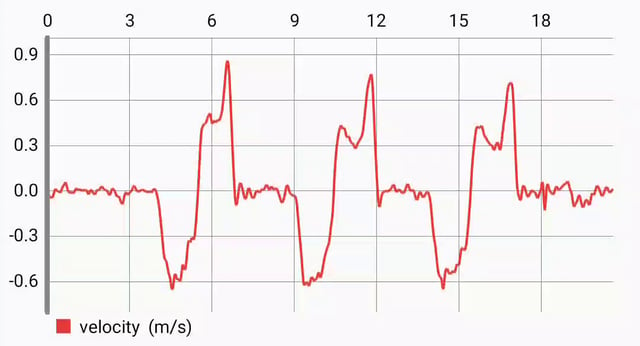During a recent squat session I tried out a bar tracking app and unexpectedly it also provided a bunch of velocity data for the set. I know that velocity based training is a thing but I always thought it was a bit less accessible.
- This is a screen recording of the video it provided to me.
- Here's a screen-cap of the first frame.
- And here is just a crop of the velocity data:
I've seen some mixed pieces about how to interpret this data. Information like here seem to have average speeds that relate back to RPE (excerpt below) but I've seen varying tables, such as the one in this Kabuki video where the numbers don't quite agree.
10 RPE- .3m/s and down
9 RPE- .3 to .5 m/s
8 RPE- .5 to .75 m/s
7 RPE- .75 to 1 m/s
6 RPE- 1 to 1.3 m/s
5 RPE- Greater that 1.3 m/s used for starting strength or warm up
1-4 RPE- Warm up weight used for technique and recovery.
Overall this seems to be backed up by the literature. However, other sources say you need to lift with velocity tracking for weeks to develop a sort of baseline for your lifts in order for this information to be accurate. Additionally, when I squat, the velocity is split into two zones: before and after the sticking point. I'm not sure where in the chart I should use.
At the end of the day, I'm not looking to get into velocity-based training but I'd just like to use this as another possible tool, mainly to help me sanity check my RPE ratings.
Question: How do I use this velocity data to improve my workouts and support my RPE estimates?
